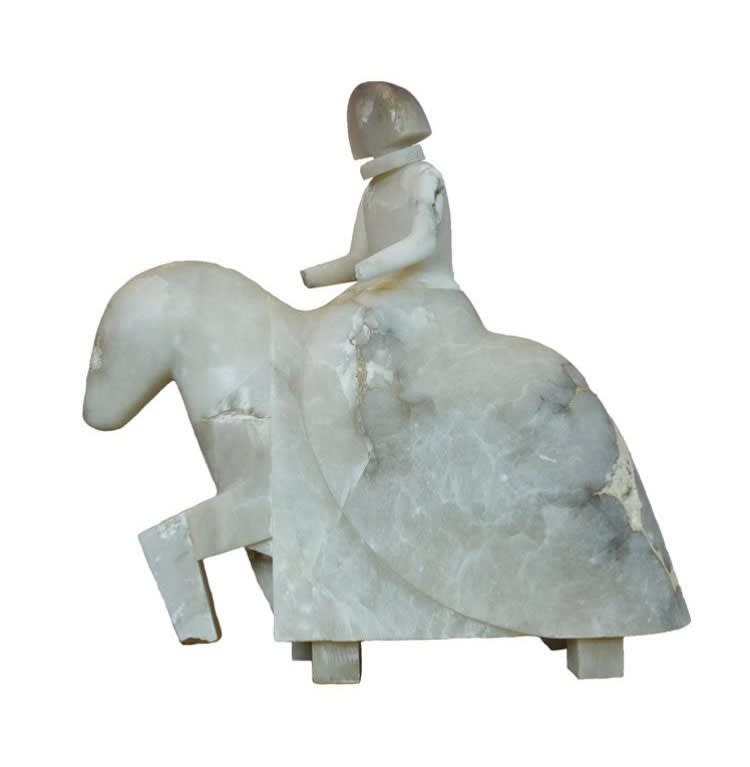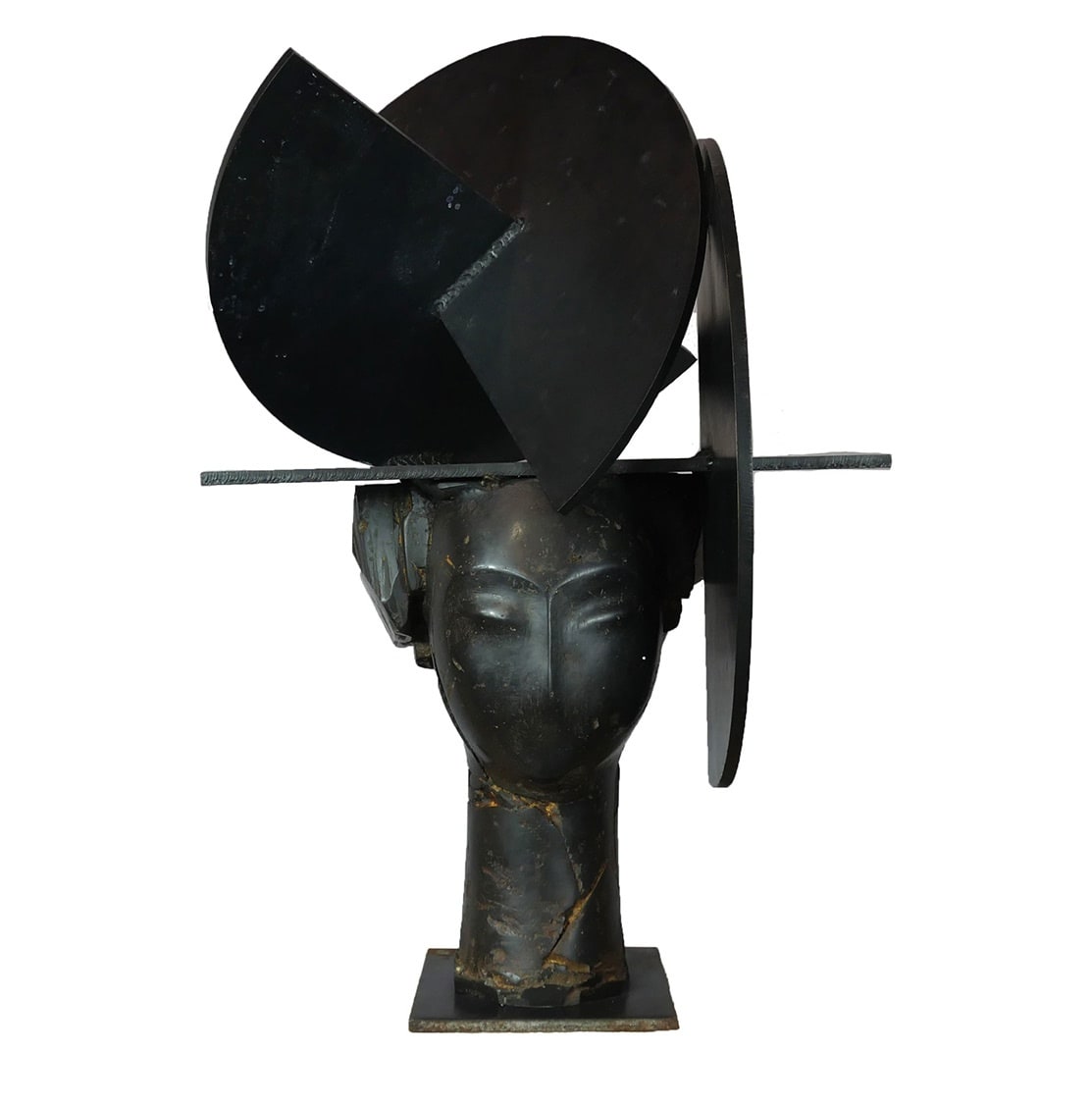Internationally known for a distinctive and signature aesthetic that has captured worldwide acclaim, Valdés has diligently crafted smaller studio sculptures alongside the monumental public art projects that also encase all the art historical contexts Valdés holds dear.
Born in 1942, in Valencia, Spain, Valdés enrolled at the Fine Arts Academy of San Carlos, Valencia, when he was 15 years old. Initially trained as a fine art painter, Valdés chose to experiment with various art making techniques including collage, printmaking, drawing, and sculpture. In 1964 at the age of 22, Valdés co-founded the Equipo Crónica, an artist collective joined by Rafael Solbes and Joan Toldeo—a venture that would lead these three artists to use the notions of Pop Art to effectively project criticisms onto the government of Spanish dictator, Francisco Franco. As documented, Valdés participated in over 60 solo exhibitions and an abundance of group exhibitions under the guise of Equipo Crónica until 1981, which was dissolved upon death of Rafael Solbes.
After 1981, Valdés began to focus more on his solo artistic career reflecting a defining decision to look to the past to understand the future. This was a self-guiding inquisition into an archived artistic lineage a type of internalization and contextual assimilation of the fundamentals of art history. The traditional masters like Goya, Rembrandt and Velázquez were seemingly pristine inspirations for Valdés. Conceptions of reinventing physical images arose in his work as he strove to cement a new artistic vision. From Picasso to Brancusi, from Degas to El Greco, Valdés took aim at achieving a constant experimentation of art making, culling from traditional and conceptual. Timeless images appear in artworks as manipulated assemblages, hand-torn paper collages, casted figures, and resin-coated sculptures.
Valdés walked a new line of artistic freedom, fusing aspects of Pop Art with social and political commentary—an artistic state where contemporary politics and community flourish.
 Cabeza con Tocado de Mariposas, Aluminum, 18 x 11 3/4 x 7 inches (45.7 x 29.8 x 17.8 cm) Edition of 9
Cabeza con Tocado de Mariposas, Aluminum, 18 x 11 3/4 x 7 inches (45.7 x 29.8 x 17.8 cm) Edition of 9
Cabeza con Tocado de Mariposas, made of cast aluminum, is the smallest sculpture in the exhibition. At 18 inches tall, Cabeza con Tocado de Mariposas is an intimate and seemingly delicate woman’s head adorned full of cast and affixed metal butterflies. Striking in its simplicity, its presence demands attention. This Brancusi-esque portrait is majestically elegant, constructed in Valdés’ signature reductive aesthetic.

Dama a Caballo, Alabaster, 28.35 x 29.53 x 7.87 inches (72 x 75 x 20 cm)
Dama a Caballo, or “Lady on Horse”, is the only small non-head and bust sculpture in the exhibition. Grandiose in its white knight appeal, the sculpture’s true integrity is secured to the white alabaster stone material. A sense of purity resonates from the noble steed and its seated rider—a Dama equestrian, complete with flowing skirt and elongated saddle blanket. Purposefully absent are the rider’s hands and the horse’s feet—a minimalistic approach rendered by Valdés to create the feeling of a relic derived from antiquity. Sweeping lines, angular definitions and diminutive details create a dynamic flow across the sculpture’s composition. The crest of the figure’s head, a seeming half circle, or an angelic halo, brings a sense of deipotent charisma to the otherwise anonymous rider.

Juno I, Bronze, 31.5 x 20.47 x 18.11 inches (80 x 52 x 46 cm), Edition of 8
Juno I is a bronze casting and one of the only sculptures on display that does not have butterflies or organic appendages emanating from the crown of the subject. Historically, Juno was the Roman goddess of marriage and maternity. In Juno I Valdés graces the model’s head with four ridged circular shapes, affixed at right angles and cross-sectioned—an ornamental headpiece that speaks volumes of sophistication. Like some turn-of-the-century aristocrat, Juno I is an image of female empowerment. In an age of social and political correctness with the hashtag movements of reform and rage, social justice, victimization, gender power struggles and community conformity, Valdés remains stoic as well as historically relevant with this sculpture.

Helechos, Bronze, 22.05 x 16.93 x 6.3 inches (56 x 43 x 16 cm)
Helechos, or “Ferns”, is a three-part bronze sculpture by Valdés that includes a utilitarian pedestal, a miniature head and casted fern leaves that encase the figure. A nod to the environment with the preserved and casted foliage, Valdés captures a seemingly pagan essence. Gaia, in Greek mythology, was the goddess of the earth and its personification. She was also the primal mother goddess.
Helechos could indeed be a comment on the inspirational contexts of women in art and history, as well as the historic significances of the ideals of woman as Mother Earth.
Overall, the variety of aesthetics found in the figurative sculptures by Manolo Valdés at Rosenbaum Contemporary run a gamut of art historical influences. Each piece dominates its own physical space but maintains a sense of inviting allurement that relinquishes them to be more ephemeral and delicate than a casted permanency.
Manolo Valdés: Pequeñas Esculturas (Small Sculptures) will run through May 7, 2018, at Rosenbaum Contemporary's Boca Raton gallery, 150 Yamato Road, Boca Raton, Florida 33431.
